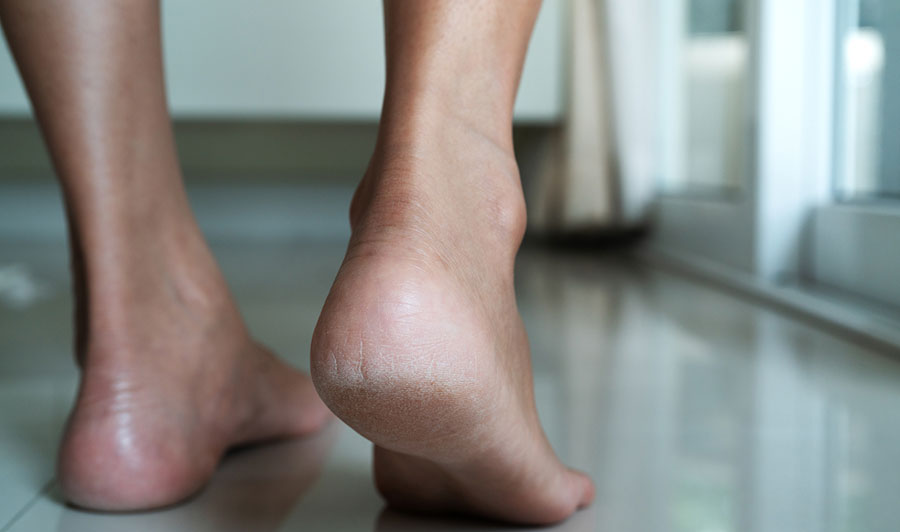Understanding Your Heel Pain and Plantar Fasciosis Treatment
Plantar fasciitis
Plantar fasciitis is a very common condition. The hallmark of plantar fasciitis is pain in the bottom of the foot near the heel that extends into the soft tissue toward the arch. It is often worse in the morning and is aggravated with weight bearing. It can be a frustrating condition for patients as many people come to our clinic after trying many different therapies with no success. Why does this happen to some people, yet others seem to repair fairly easily?
The plantar fascia is a thick, robust band of muscle, tendon and fascia on the bottom of your foot. You can feel it become taught when the big toe is moved upwards. With this movement, you can also appreciate the tension on the insertion of the plantar fascia at the heel. When it is injured the pain usually occurs near this insertion point and into the plantar fascia. The area can be tender with palpation, painful with stretching and aggravated with athletic activity and general weight bearing.
Plantar fasciosis
Plantar fasciosis is a term that not many people have heard of and is characterized by tissue degeneration as opposed to an inflammatory reaction. In the case of fasciosis, the tissues degenerate slowly over time as we see in many degenerative tendon conditions. A subtle change in foot biomechanics or new footwear can be enough to create this situation where the tissue is not able to cope with the demands being placed on them. The tissue starts to breakdown and with time becomes a noticeable painful problem. As the tissue deteriorates, it becomes less able to tolerate the loads being applied (such as with walking) and the tissue can get more damaged and eventually inflame. Essentially it can cross a “threshold” that the body recognizes, and an inflammation cycle ensues. This is plantar fasciitis, characterised by heat, warmth, swelling and all the necessary cellular responses that occur during inflammation with an injury. This is natural and necessary to fix the problem. Collagen is deposited in the areas of tendon damage to help repair the micro tears and tendon change. So, in a perfect injury setting, we get a brief inflammatory cycle that brings some necessary ingredients for tissue repair. The repair occurs, the quality of the tissue is “better” than it was and the inflammation leaves. The tissue is then slowly re-introduced to a graduated tissue load that it can withstand and adapt to, eventually to the point where the person can run and jump with no pain. The problem for many people is that they get stuck in a cycle of injury. They damage the tissue, the body tries to repair it and, then they damage it again (doing things like running or walking). This can be frustrating for a runner for example. Imagine a recreational runner who developed a plantar fasciosis that eventually became inflamed (fasciitis). Due to the pain, they stop running. Now the condition continues to go through the cycle of inflammation and repair with day to day walking, yet the patient is upset because they have stopped running and expect the condition to improve simply because of that.
Confused? Don’t worry about it. The purpose of this blog entry is to introduce the idea of tendon degeneration and repair to our readers and the difference with an inflammatory response. These situations are different but often occur in succession. The reason a condition might be stubborn to respond is related to tissue threshold for damage and the amount of load it can withstand. As the body is doing its best to repair a damaged area, walking might simply be enough load that the tissue isn’t ready for yet. What is needed is more time without too much load, so the collagen deposition can remodel the area enough to make it strong and able to tolerate walking. For example, strength exercises should help the tissue adapt to a point that it can withstand the functions that the person demands of it. This demand might be different for every person.
Treatment for plantar fasciitis or plantar fasciosis
So, how do we fix plantar fasciitis or plantar fasciosis? We don’t…the natural response of the body does. What we try to do in the clinic is facilitate this process and speed it all up. We find ways to lessen the burden on the tissues (such as supportive tape, footwear modification, orthotics, altered training load, gait retraining or advice on walking) and then we attempt to assist the remodelling of the area (such as laser therapy, active release, graston, home exercise, eccentric strength, strengthening of the foot intrinsics etc.). If you’re in a cycle of tissue re-injury, we try to identify that and help you find ways to break that cycle.
Are you experiencing pain in your foot? Do you have heel pain that might be plantar fasciitis or plantar fasciosis? Give us a call at Burlington Sports Therapy….we can help!
By: Dr. Kevin McIntyre B.Kin., DC








